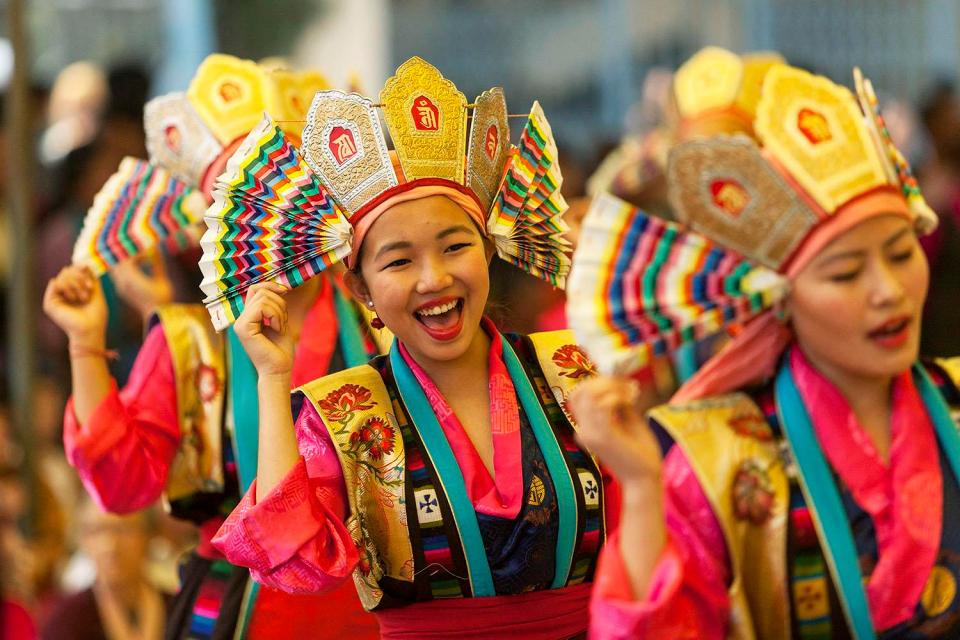Losar is a festival in Tibetan Buddhism. The holiday is celebrated on various dates depending on location. The holiday is a new year’s festival, celebrated on the first day of the lunisolar Tibetan calendar, which corresponds to a date in February or March in the Gregorian calendar. In 2018, the new year commenced on the 16th of February and celebrations will run until the 18th of the same month. It also commenced the Year of the Male Earth Dog.

The variation of the festival in Nepal is called Lhochhar and is observed about eight weeks earlier than the Tibetan Losar.
Losar is celebrated for 15 days, with the main celebrations on the first three days. On the first day of Losar, a beverage called changkol is made from chhaang (a Tibetan cousin of beer). The second day of Losar is known as King’s Losar (gyalpo losar). Losar is traditionally preceded by the five-day practice of Vajrakilaya. Because the Uyghurs adopted the Chinese calendar, and the Mongols and Tibetans adopted the Uyghur calendar, Losar occurs near or on the same day as the Chinese New Year and the Mongolian New Year, but the traditions of Losar are unique to Tibet, and predate both Indian and Chinese influences. Originally, ancient celebrations of Losar occurred solely on the winter solstice, and was only moved to coincide with the Chinese and Mongolian New Year by a leader of the Gelug school of Buddhism.
Prior to the Chinese occupation of Tibet in 1950, Losar began with a morning ritual ceremony at Namgyal Monastery, led by the Dalai Lama and other high-ranking lamas, with government officials participating, to honor the Dharmapala (dharma-protector) Palden Lhamo. After the Dalai Lama was exiled, many monasteries were dissolved during the Cultural Revolution. Since that time, Tibetan Buddhism practice in Tibet has been somewhat restored, and “Losar is now celebrated, though without the former ceremonies surrounding the person of the Dalai Lama.”
In Tibet, various customs are associated with the holiday:
Families prepare for Losar some days in advance by thoroughly cleaning their homes; decorating with fragrant flowers and their walls with auspicious signs painted in flour such as the sun, moon, or a reversed swastika; and preparing cedar, rhododendron, and juniper branches for burning as incense. Debts are settled, quarrels are resolved, new clothes are acquired, and special foods such as kapse (fried twists) are made. A favorite drink is chang (barley beer) which is served warm. Because the words “sheep’s head” and “beginning of the year” sound similar in Tibetan, it is customary to fashion a sheep’s head from colored butter as a decoration. Another traditional decoration that symbolizes a good harvest is the phyemar (“five-grain bucket”), a bucket with a wooden board that creates two vertical halves within. This bucket is filled with zanba (also known as tsamba, roasted qingke barley flour) and barley seeds, then decorated with barley ears and colored butter.
Losar customs in Bhutan are similar to, but distinct from, customs in neighboring Tibet. Modern celebration of the holiday began in Bhutan in 1637, when Shabdrung Ngawang Namgyal commemorated the completion of the Punakha Dzong with an inaugural ceremony, in which “Bhutanese came from all over the country to bring offerings of produce from their various regions, a tradition that is still reflected in the wide variety of foods consumed during the ritual Losar meals.”[15] Traditional foods consumed on the occasion include sugarcane and green bananas, which are considered auspicious. In Bhutan, picnicking, dancing, singing, dart-playing, archery (see archery in Bhutan), and the giving of offerings are all traditions.
The Tibetan calendar is a lunisolar calendar. Losar is celebrated on the first through third days of the first lunar month.


Comments